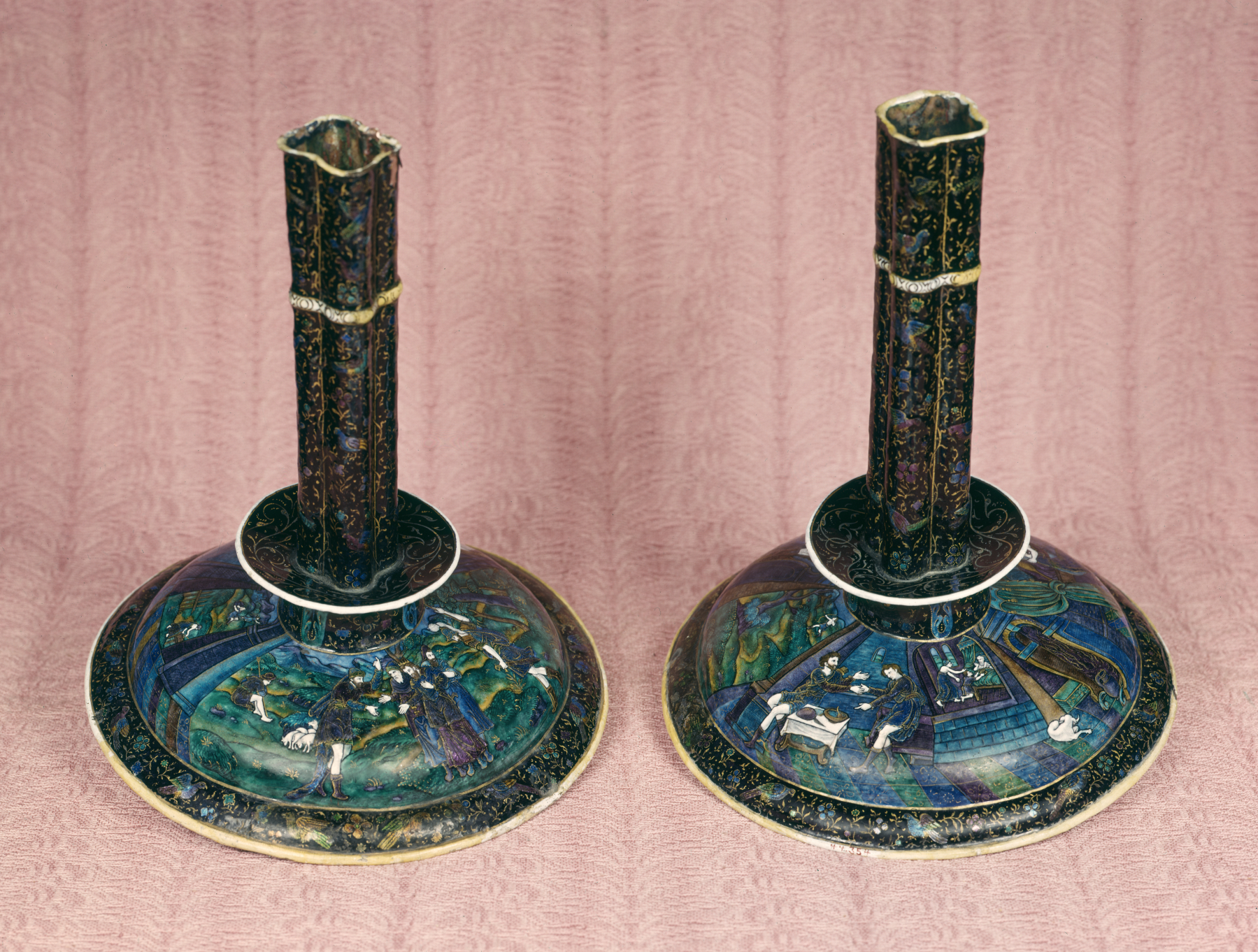Pair of Candlesticks: The Story of Jacob and Esau
(Baroque Europe )
The two candlesticks have a flattened dome-shaped foot with a molded rim, a short cylindrical stem, an inward-sloping grease-pan and a long hollow shaft of quatrefoil section, having a narrow molded band on the upper part. The top edge curls slightly outwards. This type of candlestick was still used in France during the reign of Louis XIII and is seen in the engraving of Lagnet, "Le jeu ne vaut pas la chandelle," (H. R. d'Allemagne, "Historie du luminaire," Paris, 1891, pl. 33).
On the foot of each candlestick are painted episodes of the story of Jacob. For more information see P. Verdier, "Catalogue of the Painted Enamels of the Renaissance," Baltimore: The Trustees of the Walters Art Gallery, 1967.
Inscription
Provenance
Provenance (from the French provenir, 'to come from/forth') is the chronology of the ownership, custody, or location of a historical object. Learn more about provenance at the Walters.
Princes of Hesse [date and mode of acquisition unknown]; [at one time exhibited in the Grossherzogliches Museum, Darmstadt (inventory 1891, 84-87, previously 1049-1052)]; Jacques Seligmann, Paris [date and mode of acquisition unknown]; Henry Walters, Baltimore, 1925, by purchase; Walters Art Museum, 1931, by bequest.
Geographies
France, Limoges (Place of Origin)
Measurements
Each H: 9 x W: 7 1/2 in. (22.9 x 19 cm)
Credit Line
Acquired by Henry Walters, 1925
Location in Museum
Not on view
Accession Number
In libraries, galleries, museums, and archives, an accession number is a unique identifier assigned to each object in the collection.
In libraries, galleries, museums, and archives, an accession number is a unique identifier assigned to each object in the collection.
VO.110 (44.354, 44.355)


